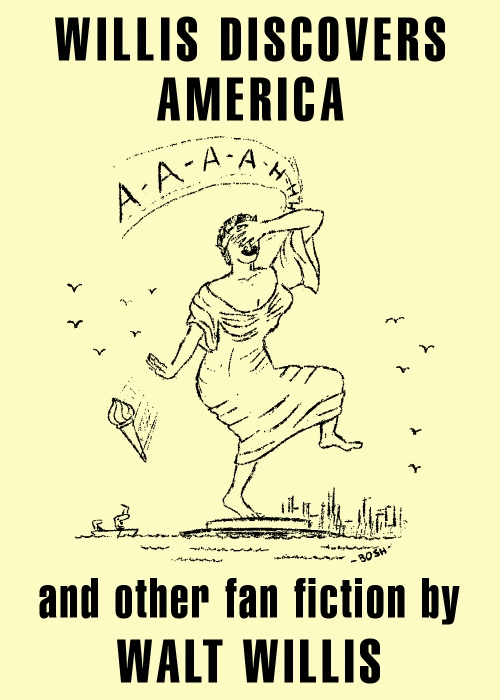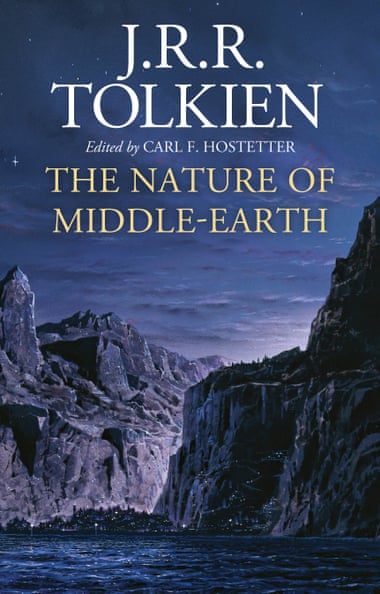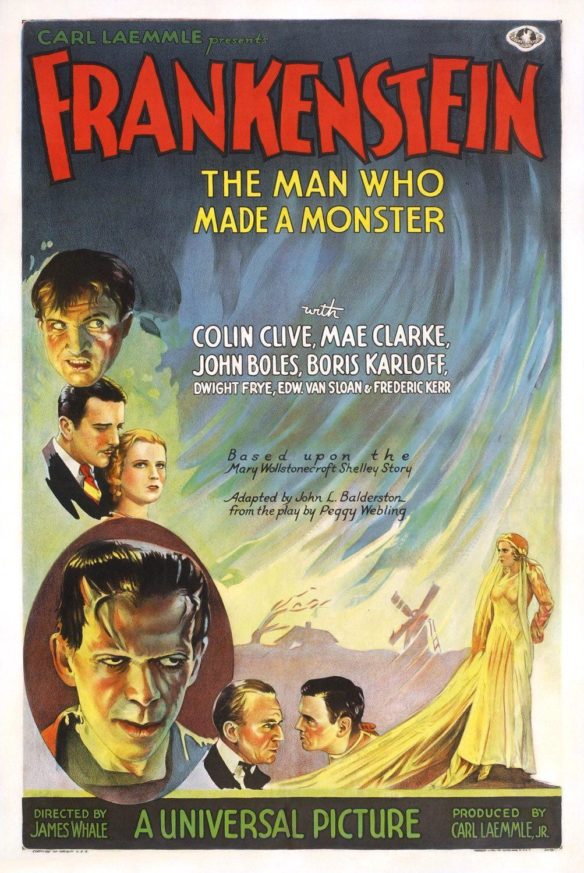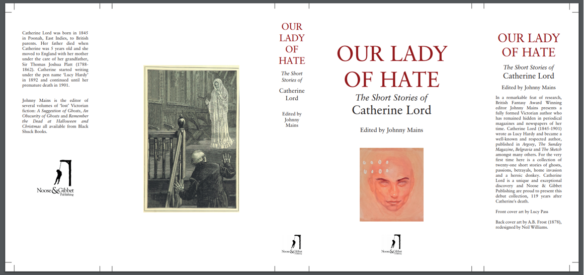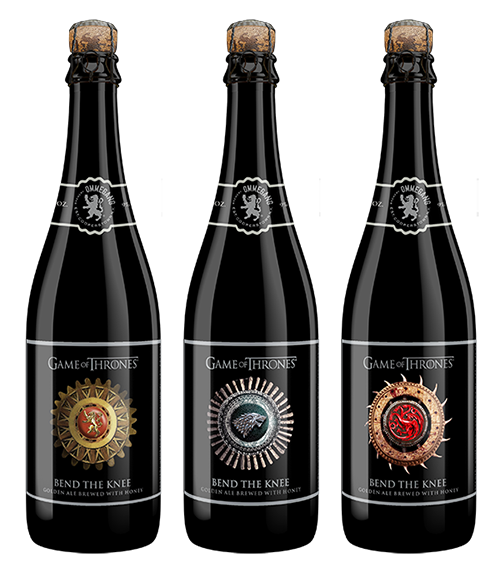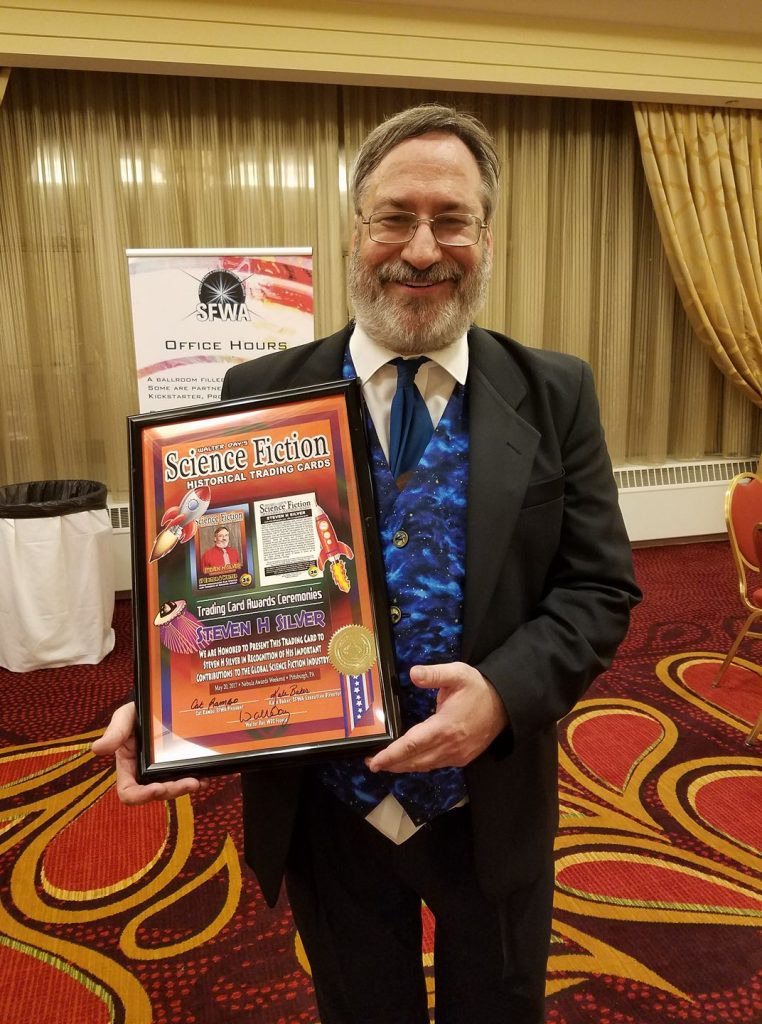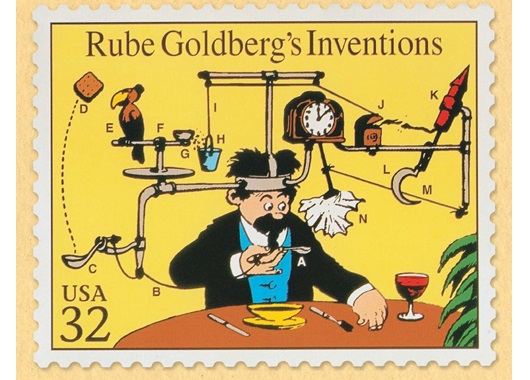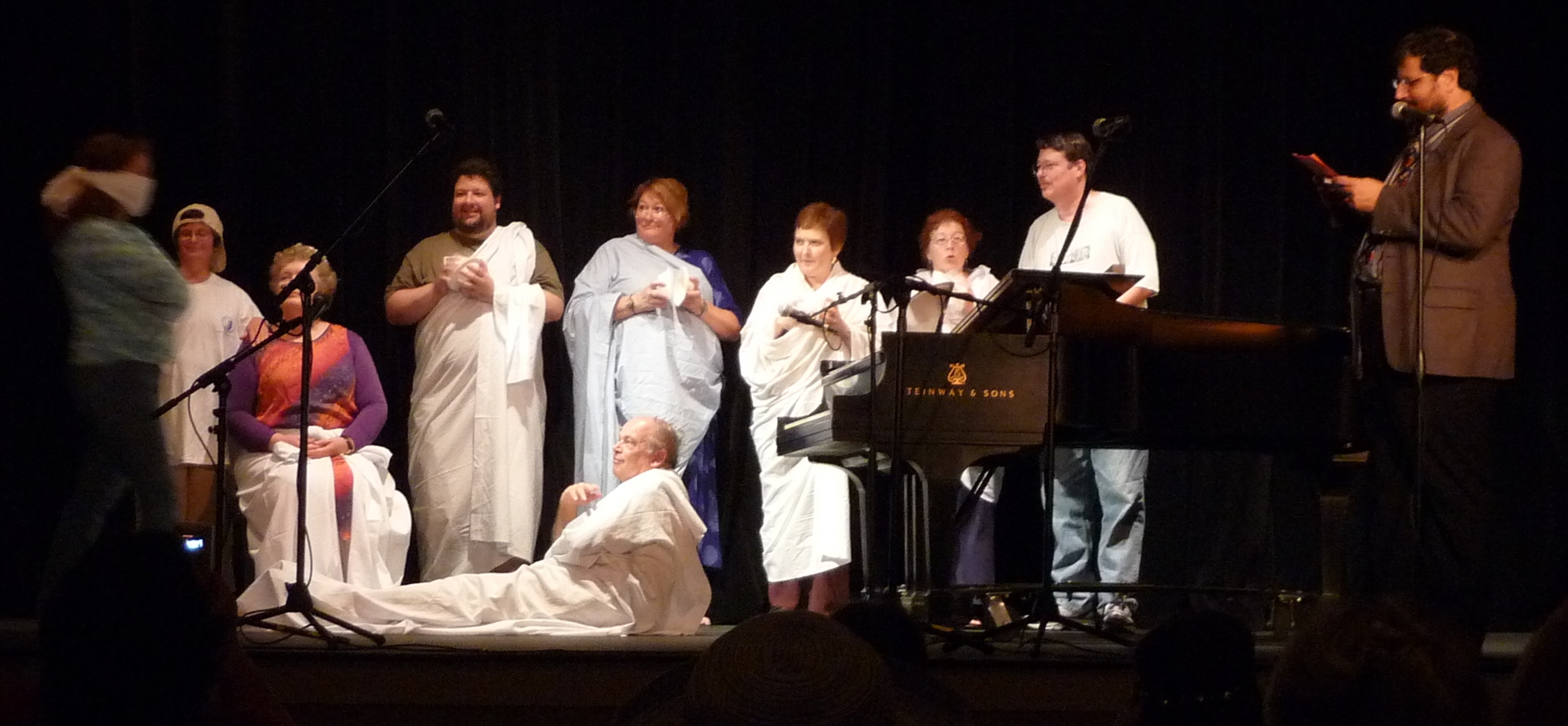(1) A COLORADO FAN MARRIAGE. “A Wedding 18 Years in the Making for Colorado Governor”. The Governor of Colorado and his spouse first met at a bookstore in 2003, and a month later went to MileHiCon. They finally wed earlier this month.
Gov. Jared Polis of Colorado gets one question a lot about his Sept. 15 wedding to Marlon Reis. “People say, ‘You know, it took you a while to get married,’” Mr. Polis, a Democrat, said. “But what’s important to remember is that Obergefell v. Hodges wasn’t until 2015. So we really only waited six years.”
Obergefell v. Hodges is the U.S. Supreme Court case that legalized same-sex marriage. Mr. Polis, 46, and Mr. Reis, 40, met 18 years ago. Back then, neither imagined he would one day be able to have a legal union. Finding others who identified as L.G.B.T.Q. in Boulder was hard enough.
“It was a relatively small community here,” Mr. Polis said. “There was no Tinder.” There were chat sites and forums that helped connect the community, though. Which is how Mr. Polis and Mr. Reis ended up meeting at Boulder Book Store in September 2003. First came a browse through the sci-fi section, then came dinner.
Mr. Reis, a writer whose focus is animal welfare and L.G.B.T.Q. rights, was in his last year of college at the University of Colorado. Mr. Polis was an entrepreneur with political aspirations; before he became governor in 2019, he served for a decade in the U.S. House of Representatives. At the bookstore, “we just really hit it off,” Mr. Polis said.
By the time they attended MileHiCon, a gathering for science fiction and fantasy fans, a month later, they were falling in love. The weekend-long convention in Denver was, for Mr. Polis, a yardstick for compatibility. “I remember Jared being slightly nervous about it, saying, ‘This is the test to see if we can be around each other a few days,’” Mr. Reis said. “I had never seriously dated anybody. To my way of thinking, it was, Of course we’re going to be fine.”…
(2) HOW FANTASTIC WAS SHE? At Galactic Journey, John Boston and Cora Buhlert profile a legendary editor in “[September 26, 1966] All that glitters: in praise of Cele Goldsmith Lalli”.
Boston, the blog’s resident Amazing reviewer, comments on Amazing and Fantastic in general:
…Goldsmith’s most often recognized achievement is the significant number of excellent writers whom she discovered and who went on to considerable success. The list speaks for itself: Keith Laumer, Neal Barrett, Jr., Roger Zelazny, Sonya Dorman, Thomas M. Disch, Ursula K. LeGuin, Phyllis Gotlieb, Piers Anthony. She also provided a home for David R. Bunch, who had been publishing in semi-professional and local markets throughout the ‘50s, but who became a regular in Amazing and Fantastic, albeit to decidedly mixed reception. Similarly, she was the first American editor to publish J.G. Ballard, who had made a substantial reputation in the British SF magazines but had not previously cracked the US magazines. Lalli’s lack of background in SF before she came to Ziff-Davis may have served her well by leaving her more open than other editors to departures from genre business as usual….
Cora Buhlert sets her focus on Cele Goldsmith Lalli’s role in ushering in the sword and sorcery revival of the 1960s:
…Cele Goldsmith had only just been born during sword and sorcery’s first heyday in the 1930s and certainly did not read Weird Tales in the crib, but she knew a rising genre when she saw one. So she began publishing more sword and sorcery stories by other authors.
Roger Zelazny is one of Cele Goldsmith’s great discoveries. His first professional story “Horseman!”, which appeared in the August 1962 issue of Fantastic, was a sword and sorcery story. It wasn’t even the only sword and sorcery story in that issue. The title story “Sword of Flowers” by Larry M. Harris a.k.a. Laurence M. Janifer as well as “The Titan,” a reprint of a 1934 story by P. Schuyler Miller, were sword and sorcery as well….
(3) PSYCHOHISTORY’S FIRST PAGES. On Cora Buhlert’s own blog, she reviews the first episode of Foundation: “Foundation enjoys “The Emperor’s Peace” and turns out better than expected”.
… But Foundation? Yes, my 16-year-old self would have killed for a Foundation TV show and indeed she is the reason I watched and reviewed it, because she would not forgive me. But my 48-year-old self says, “Ahem, better leave that one alone and film something that’s easier to adapt and also more suited to modern sensibilities.” Because Foundation is less a novel or several, but a series of interconnected short stories from the 1940s, which span a period of 500 years and have no continuing characters except for Hari Seldon’s wisdom dispensing hologram (and Daneel, if you want to include him). Worse, the characters that make up the cast of the individual stories are rather underdeveloped and not particularly memorable. Also, the first five stories, which make up the first book, are a little dull, heavy on the talking and low on action. All the really exciting stuff, which will leave you at the edge of your seat with your jaw dropping open, happens in books 2 and 3. So in short, Foundation is extremely difficult to adapt, probably impossible, if you take Hollywood’s insistence that their audiences are stupid into account.
But no one wants my opinion and so, after decades of trying, Apple has finally adapted Foundation series for its streaming service. …
(4) VARIATIONS ON A THEME. In case it’s the sort of thing you like to keep track of, Screen Rant covers “Foundation Book Differences: All Major Changes The Show Makes”.
… Gaal Dornick isn’t the only one to have been changed significantly. Salvor Hardin has been gender-swapped as well, played by industry newcomer Leah Harvey, and she’s been reinvented as the Warden of Terminus rather than its mayor. This fundamentally alters the dynamics on Trantor, because Salvor’s role is a military one rather than an administrative one. In the books, Hardin was well-known for his many sayings, with the most famous being that “violence is the last refuge of the incompetent.” But Foundation‘s Salvor Hardin feels like a much more action-oriented character, suggesting her role going forward will be very different….
(5) VISIT TO THE LEIBER ARCHIVE. Michael Curtis gives Goodman Games readers a tour of the Fritz Leiber Papers Archive at the University of Houston: “Michael Curtis Visits Leiber’s Legendary Lankhmar Library in Houston”. This is also where Leiber’s Retro Hugos reside. Not sure about the regular Hugos he won.
…In the meantime, here’s a partial summary of some of the things I examined while in Houston:
The correspondence between Leiber and Harry Otto Fischer, the co-creator of Fafhrd and the Gray Mouser. Amongst many revelations in the letters, I discovered Fischer had plans for another F&GM story he discussed with Leiber but never penned. The story, as Fischer envisioned it, “all ends in a single handed combat with the Mouser unarmed (or so it seems) dressed as a He-whore of Lankhmar against a peculiar foe (axman deluxe).” Am I the only one who wishes I could read a story featuring the Gray Mouser dressed as a gigolo fighting a maniacal axe-wielding warrior empty-handed?…
(6) RETURN TO SENDER OF THE JEDI. An opinion piece published by Scientific American seeks to persuade readers “Why the Term ‘JEDI’ Is Problematic for Describing Programs That Promote Justice, Equity, Diversity and Inclusion”.
The acronym “JEDI” has become a popular term for branding academic committees and labeling STEMM (science, technology, engineering, mathematics and medicine) initiatives focused on social justice issues. Used in this context, JEDI stands for “justice, equity, diversity and inclusion.” In recent years, this acronym has been employed by a growing number of prominent institutions and organizations, including the National Academies of Sciences, Engineering, and Medicine. At first glance, JEDI may simply appear to be an elegant way to explicitly build “justice” into the more common formula of “DEI” (an abbreviation for “diversity, equity and inclusion”), productively shifting our ethical focus in the process. JEDI has these important affordances but also inherits another notable set of meanings: It shares a name with the superheroic protagonists of the science fiction Star Wars franchise, the “Jedi.” Within the narrative world of Star Wars, to be a member of the Jedi is seemingly to be a paragon of goodness, a principled guardian of order and protector of the innocent. This set of pop cultural associations is one that some JEDI initiatives and advocates explicitly allude to.
Whether intentionally or not, the labels we choose for our justice-oriented initiatives open them up to a broader universe of associations, branding them with meaning—and, in the case of JEDI, binding them to consumer brands. Through its connections to Star Wars, the name JEDI can inadvertently associate our justice work with stories and stereotypes that are a galaxy far, far away from the values of justice, equity, diversity and inclusion. The question we must ask is whether the conversations started by these connections are the ones that we want to have.
As we will argue, our justice-oriented projects should approach connections to the Jedi and Star Wars with great caution, and perhaps even avoid the acronym JEDI entirely. Below, we outline five reasons why.
The first reason advanced is —
The Jedi are inappropriate mascots for social justice. Although they’re ostensibly heroes within the Star Wars universe, the Jedi are inappropriate symbols for justice work. They are a religious order of intergalactic police-monks, prone to (white) saviorism and toxically masculine approaches to conflict resolution (violent duels with phallic lightsabers, gaslighting by means of “Jedi mind tricks,” etc.). The Jedi are also an exclusionary cult, membership to which is partly predicated on the possession of heightened psychic and physical abilities (or “Force-sensitivity”). Strikingly, Force-wielding talents are narratively explained in Star Wars not merely in spiritual terms but also in ableist and eugenic ones: These supernatural powers are naturalized as biological, hereditary attributes. So it is that Force potential is framed as a dynastic property of noble bloodlines (for example, the Skywalker dynasty), and Force disparities are rendered innate physical properties, measurable via “midi-chlorian” counts (not unlike a “Force genetics” test) and augmentable via human(oid) engineering. The heroic Jedi are thus emblems for a host of dangerously reactionary values and assumptions. Sending the message that justice work is akin to cosplay is bad enough; dressing up our initiatives in the symbolic garb of the Jedi is worse.
This caution about JEDI can be generalized: We must be intentional about how we name our work and mindful of the associations any name may bring up—perhaps particularly when such names double as existing words with complex histories….
Lela E. Buis’ response was: “Scientific American Tries to Cancel Star Wars”. She concludes:
…So, this article was rated on Twitter and mentioned in a couple of news feeds. It did not fare well. The obvious problem is that they’re dissing the Jedi, so Star Wars fans are derisive. The films are built on important archetypes and have entered the cultural consciousness of our society, which means they’re pretty sacred. The other problem hasn’t been pointed out very clearly, which is that this is an example of the pot calling the kettle black. Enforced conformity to an ideal? Who’s the absolute worst for that?
(7) TOLKIEN’S THIRD LIFE. Bradley J. Birzer praises Carl Hostetter’s new book, which continues the revelation of Tolkien’s unpublished material: “Book Review: ‘The Nature of Middle-earth’ Reminds Us of J. R. R. Tolkien’s Greatness” at National Review.
When J. R. R. Tolkien (b. 1892) passed away in 1973, he left an immense amount of unpublished writings — much of which consisted of his own personal Middle-earth mythology, known as the legendarium, begun just prior to World War I. After his father’s death, Tolkien’s youngest son, Christopher (1924–2020), became his literary heir, publishing his father’s The Silmarillion in 1977, Unfinished Tales in 1980, the twelve-volume History of Middle-earth (1983–1996), the three great tales of the First Age, as well as several books on various non-Middle-earth mythologies, such as on the Nibelungenlied, Beowulf, and King Arthur.
Amazingly, however, even with Tolkien’s writings taking two adult professional lives to publish, the corpus of Tolkien’s work is still not completely available to the public in book form. Just this month, a full year and a half after Christopher Tolkien’s death, Houghton Mifflin has released yet another volume of Tolkien’s mythological writings. Titled The Nature of Middle-earth, it is beautifully and expertly compiled and edited by one of our greatest living Tolkien scholars, Carl F. Hostetter….
(8) DOUG BARBOUR (1940-2021). Canadian fan, poet and academic Doug Barbour died of cancer September 25 at the age of 81. His “Patterns of Meaning in the SF Novels of Ursula K. Le Guin, Joanna Russ and Samuel R. Delany, 1962-1972,” in 1976 was the first Canadian doctoral dissertation in the field of science fiction.
He also co-edited with Phyllis Gotlieb Tesseracts 2 (1987), one of the Tesseracts series of anthologies containing original Canadian stories.
As a fanwriter he contributed to Ash-Wing and Riverside Quarterly. Also, notes Bruce Gillespie, “He has been a tireless writers of letters of comment and articles for my magazines. We shared many enthusiasms, especially music (classical, jazz, and what is now called Americana), some SF writers, and poetry. Doug was a well-known Canadian poet and writer about poetry. …He did several poetry-reading tours of Australia, during which he met and made friends with far more Australian poets than most Australian poets ever meet.”
The Canadian Encyclopedia entry about him discusses his accomplishments as a poet.
(9) MEMORY LANE.
1987 – Thirty-four years in syndication, Star Trek: The Next Generation‘s “Encounter at Farpoint” opening episode premiered. It was written by D. C. Fontana and Gene Roddenberry and directed by Corey Allen. The series would run for seven years. It was premiered eighteen years after the original series was cancelled. I’m not going to list the cast as y’all well know who they are. The series would win two Hugos, first at ConFrancisco for the “Inner Light” episode, and then for “All Good Things…” at Intersection. The “Encounter at Farpoint” premier episode was nominated at Nolacon II but lost out to The Princess Bride. It currently holds a ninety-one percent rating among audience reviewers at Rotten Tomatoes.
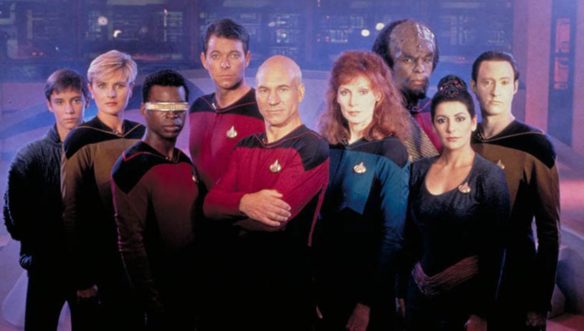
(10) TODAY’S BIRTHDAYS.
[Compiled by Cat Eldridge.]
- Born September 26, 1888 — T. S. Eliot. He’s written at least three short poems that are decidedly genre, “Circe’s Palace” “Growltiger’s Last Stand” and “Macavity: The Mystery Cat”. Then there’s his major work, “The Waste Land” which is genre as well. It’s worth noting that Lovecraft intensely hated the latter and wrote a parody of it called “Waste Paper: A Poem of Profound Insignificance”. (Died 1965.)
- Born September 26, 1941 — Martine Beswick, 80. Though she auditioned for Dr. No, she was instead cast in From Russia with Love as Zora. She also appeared as Paula Caplan in Thunderball. She would appear in One Million Years B.C. opposite Raquel Welch. She made several Hammer Studio films including Prehistoric Women and Dr. Jekyll and Sister Hyde. She showed up on Fantasy Island once.
- Born September 26, 1942 — Kent McCord, 79. Several genre roles with his first being an uncredited role as a Presidential aide in Seven Days in May. His next is in Predator 2 as Captain Pilgrim, then he had a recurring role as Commander Scott Keller on Seaquest DSV, and finally being Jack Crichton on Farscape. Oh, and if you look very carefully in “The Quadripartite Affair” episode of The Man from U.N.C.L.E., you’ll spot him as the Man in Hallway.
- Born September 26, 1946 — Louise Simonson, 75. Comic editor and writer. She started as editor on the Creepy, Eerie, and Vampirella titles at Warren Publishing. Working for DC and Marvel, she created a number of characters such as Cable and Doomsday, and written quite a few titles ranging from Doomsday, Wonder Woman, Conan the Barbarian and X-Terminators. She’s written a Star Wars title for Dark Horse.
- Born September 26, 1956 — Linda Hamilton, 65. Best known for being Sarah Connor in The Terminator film franchise and Catherine Chandler in the Beauty and the Beast series. (I wonder what the Suck Fairy would do to the latter series. It’s on Paramount+ which I subscribe to.) She is also Vicky Baxter in Children of the Corn, and Doctor Amy Franklin in King Kong Lives. She would be Acacia, a Valkyrie in “Delinquents” of the Lost Girl series, a role she would reprise in two more episodes, “End of a Line” and “Sweet Valkyrie High”. She’s currently playing General Macalliaster in the Resident Alien, the Syfy series based on the comic book series of the same name by Peter Hogan and Steve Parkhouse.
- Born September 26, 1957 — Tanya Huff, 64. Her now-concluded Confederation of Valor Universe series is highly recommended by me. And I also give a strong recommendation to her Gale Family series. I’ve not read her other series, so I’ll ask y’all what you’d recommend.
- Born September 26, 1959 — Ian Whates, 62. The Noise duology, The Noise Within and The Noise Revealed, are space opera at its finest. As an editor, he’s put together some forty anthologies of which I’ll note only the most recent, London Centric: Tales of Future London, as it’s a quite amazing collection.
- Born September 26, 1968 — Jim Caviezel, 53. John Reese on Person of Interest which CBS describes as a “crime drama”. Huh. He was also Detective John Sullivan in Frequency, and Kainan in Outlander. And yes, he played Number Six in the rather unfortunate reboot of The Prisoner.
(11) COMICS SECTION.
- Saturday Morning Breakfast Cereal recognizes that airplane manufacturing infrastructure is complicated.
(12) SET AND MATCH. Trekonderoga 2021 took place this weekend in Ticonderoga, NY. There’s a reason for the location, as we learn from a Gothamist article: “Interview: The Star Trek Fandom Lives Long & Prospers At Trekonderoga”.
First of all: why does Ticonderoga have this incredible replica of the bridge of the starship Enterprise? I suppose the answer is “why not?”, but I’d expect to see something like this in Hollywood. Well, here’s the thing. It’s 13,000 square feet, so it’s massive. And as we all know, real estate in Manhattan and Los Angeles is extremely expensive, and this is a permanent attraction — it doesn’t move from place to place. So you’re literally walking into a one-to-one recreation of the Desilu soundstage from 55 years ago. So you have to plan it out and build it appropriately so that it stays in one place. And Ticonderoga is part of the greater Lake George region. We have a very beautiful tourist area up here in the Adirondacks so it’s a great place for it. A lot of people come through here annually and we expect that just to continue to grow.
There’s also the transporter room. Why was this something that you felt like you had to do? It’s more than the bridge and the transporter room. It’s every set that the actors worked on every day, laid out and recreated exactly the way they were when the actors worked on them. So you’re talking about the transporter room, the sick bay, the lab, Dr. McCoy’s office, Captain Kirk’s quarters, the briefing room, engineering, the entire corridor layout. It’s literally like being an actor on a time trip and going back to work on the show. I grew up with Star Trek. I was just enamored with it and never lost the passion for it. So here we are today still celebrating it.
How accurate is the set? Deadly. We worked from the original blueprints. They were given to me by the original costume designer who had them in his possession. We kept thousands of stills from the original series in high definition. We’ve sourced and located hundreds of antiques and antique furniture. We’ve rebuilt every jelly bean button. Everything is laid out, every color, proportionally. Every surviving actor from the main cast has been here, and many of the guest stars. Bill Shatner loves it so much he’s here twice a year.
(13) A WHOLE LOTTA SHAKIN’ GOING ON. “Mars probe records a big hour-and-a-half Martian quake” reports Mashable.
…NASA recently reported that its InSight lander — sent to observe geologic activity beneath the Martian surface — recorded one of its biggest quakes yet on Sept. 18. The 4.2 temblor, a quake that would have been big enough for people to feel had it happened on Earth, lasted an hour-and-a-half….
(14) DROP EVERYTHING! Hypebeast says this seasonal flavor was recently spotted in a SoCal grocery store. OMG! “Kit Kat’s Pumpkin Pie-Flavored Wafers Return”.

As summer comes to an end, Kit Kat is bringing back its seasonal Pumpkin Pie creme-covered wafers. Fall is the season for turning leaves, a new NFL season, and a variety of pumpkin-flavored food and drinks such as Nissin’s “Pumpkin Spice” cup noodles and Kraft’s Pumpkin Spice mac and cheese.
While there may be mixed feelings about the flavor of the season, Kit Kat’s Pumpkin Pie is a highly sought-after rendition….
Meanwhile, Taste of Home promises “Gingerbread Kit Kat Bars Will Be Here for Christmas 2021”. Makes no difference if you’re naughty or nice.
…The Gingerbread Kit Kat takes your favorite breakable candy bar and jollies it up for the holidays. Instead of the classic chocolate coating, you’ll instead find yourself biting into a blanket of gingerbread-flavored creme. Ooh, yes please!
(15) EAT ‘EM ALL. A corporation manipulating the marketplace, imagine that. Food & Wine tells why “Pokémon Oreos Are Listed on eBay for Thousands of Dollars”.
…So here’s some news Oreo probably saw coming: Earlier this month, the world’s best known cookie brand launched a collaboration with the game Pokémon, and in true “catch ’em all” fashion, each specially-branded pack was filled at random in what Oreo billed as its “first-ever cookie rarity scheme.”
In total, 16 different Pokémon characters were embossed onto the cookies, with some being harder to find than others. Oreo even stressed that “the hardest to find (Mew) is featured on an extremely limited amount of the total cookies produced!”
As a result, each pack “does not necessarily contain cookies with all 16 embossment designs.” So what’s someone who’s landed a bag full of worthless Pikachus and Bulbasaurs supposed to do? Turn to eBay, of course.
[Thanks to Martin Morse Wooster, JJ, Michael Toman, Lise Andreasen, Bruce Gillespie, John King Tarpinian, Cat Eldridge, Mike Kennedy, and Andrew Porter for some of these stories. Title credit belongs to contributing editor of the day Jerry Kaufman.]




